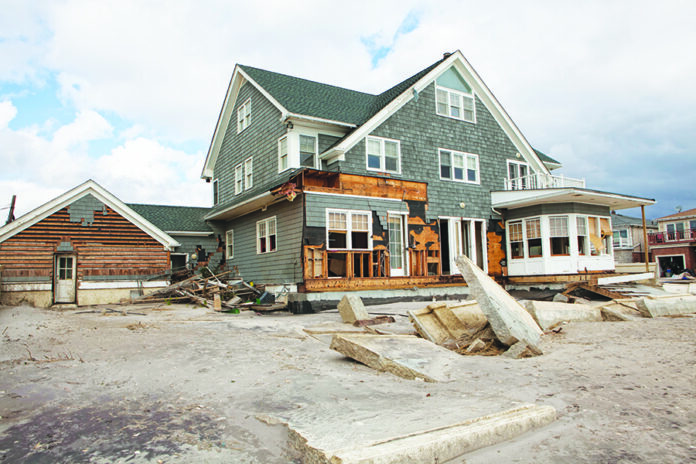The US Atlantic and Gulf coasts have suffered through many significant hurricanes. We all remember Katrina and the devastation that was unleashed on New Orleans in August of 2005.
The fact that there weren’t many modular factories producing homes in the Deep South at the time of Katrina made the rebuilding effort more difficult. But the story was different when Superstorm Sandy hit New Jersey, New York and Connecticut in 2012.
Pennsylvania is a haven for modular factories. Many of those factories were barely surviving after the 2008 recession, which meant there was plenty of capacity available for the rebuild. The combination of the proximity of factories to the devastated areas, and acceptance of modular construction by homeowners in the Northeast, made this a perfect opportunity. This time around, offsite modular construction was poised to play a larger role in the rebuilding effort.
One thing that leads to so much storm damage in older coastal areas is the fact that older homes are built on the ground. And coastal flooding is different than river flooding. When a river floods, the water runs one way. When the coast floods, the storm surge brings water in and then it takes the water back out, which means the communities are hit twice.
On top of that, homes closest to the water not only have to deal with the surge, but also endure the waves. Do you know that a cubic yard of salt water weighs 2,160 lbs. while a 1970 Volkswagen Beetle weighs 1,807 lbs.? In other words, a small wave hitting the side of a home is like throwing half a dozen Volkswagen Beetles at it. Homes can’t easily take the force of big waves so the best thing to do is to build above them by building on pilings.
Homes built in these environments have to be elevated quite high to avoid damage. The Federal Emergency Management Agency (FEMA) creates flood maps that determine the Base Flood Elevation (BFE) for a given area. For homes to get the best rates on flood insurance, they must be elevated two feet above BFE. This is where offsite modular construction shines.
Building high in the air is hard. Just think about building a deck that is 8 feet off of the ground. First, you have to plant the posts and cut them all off even. Then you have to build the floor frame at that 8-foot elevation. Several people have to lift heavy 2”x 8”s or 2”x10”s up a ladder and hold them in place while they’re fastened in place atop the posts. Then you have to lift every deck board to the top of the framing and attach it, being careful all the while not to fall off, or through, the deck. Now imagine doing this for an entire house frame.
But when you use modular construction, the home is built in a factory at ground level. Nearly complete volumetric modules are delivered to the site and, using a crane, are placed on the girder beams affixed to the top of the pilings and securely attached.
Each module is then connected together, creating a rigid structural bond between the modules. This inherent strength in the module-to-module connections makes the home resilient. And because the crane does the heavy lifting, the modules are placed quickly and safely into position. The home is up and under roof in several hours.
Offsite modular construction provides a perfect means to build homes in expensive coastal areas. It also means a safer jobsite where workers aren’t doing almost 100% of the framing 8 to 24 feet in the air every day. The speed of construction also means that the homeowners get to enjoy their coastal home faster. That may be the biggest advantage of using offsite construction.

















